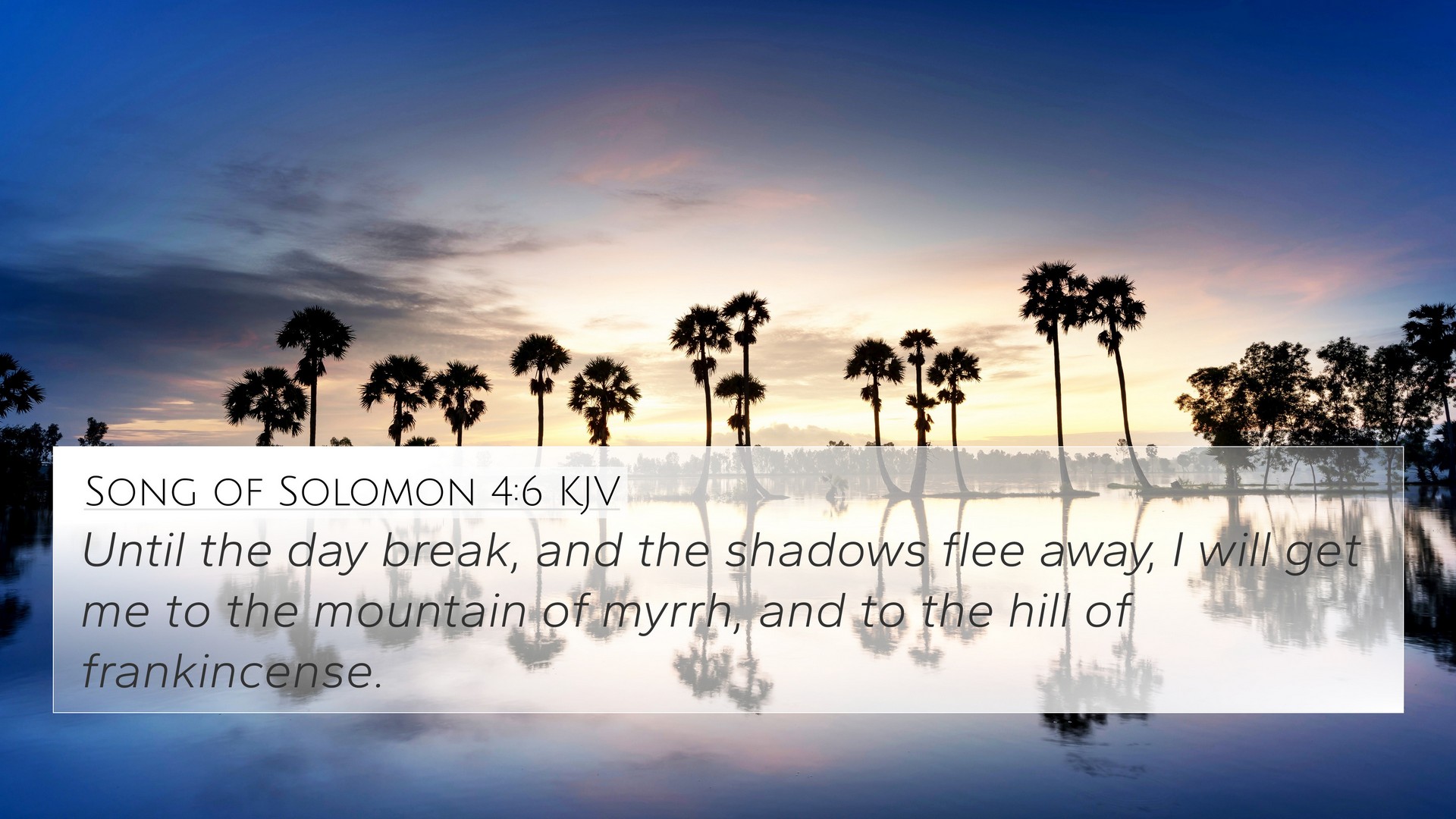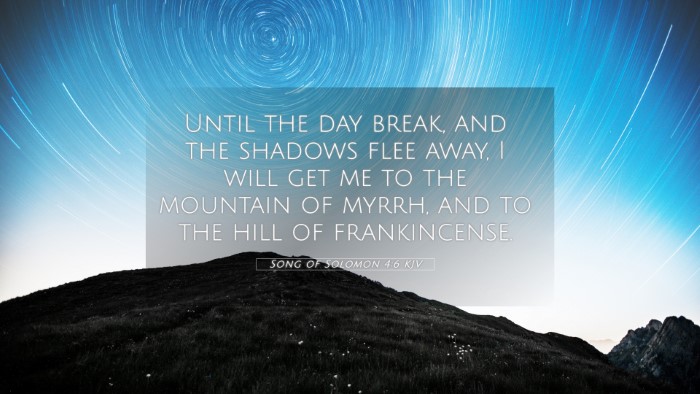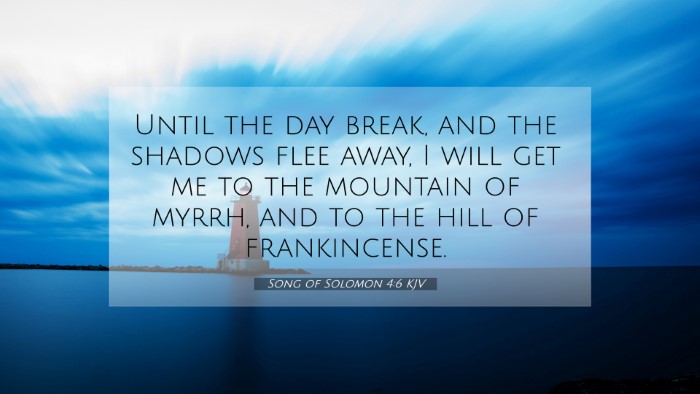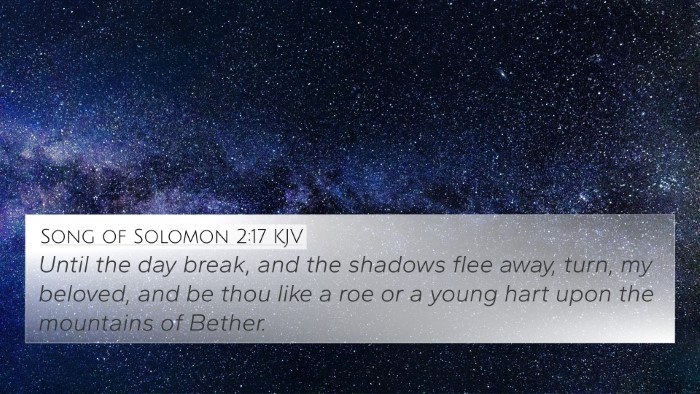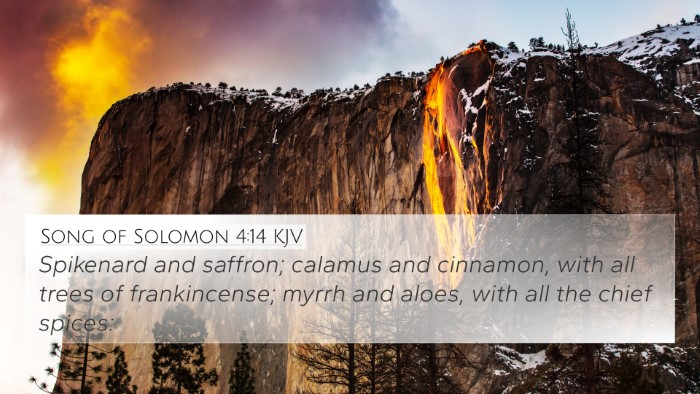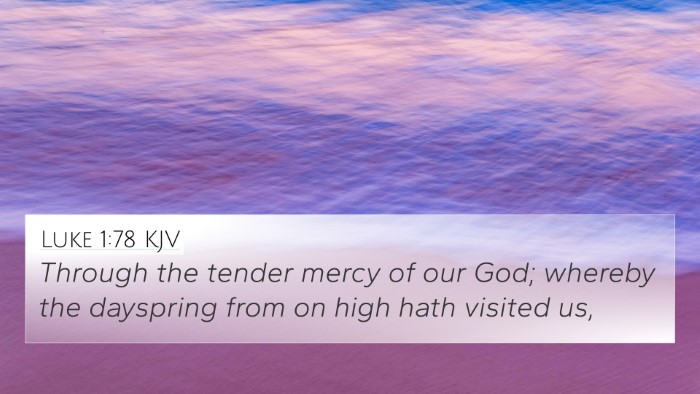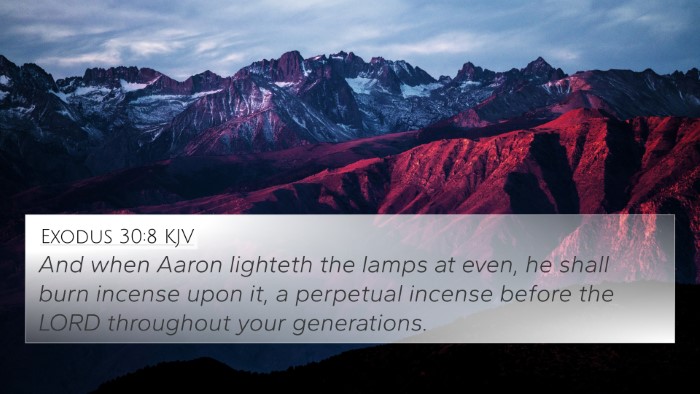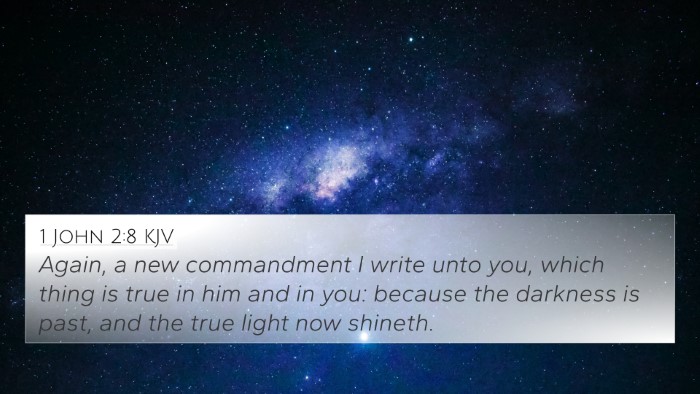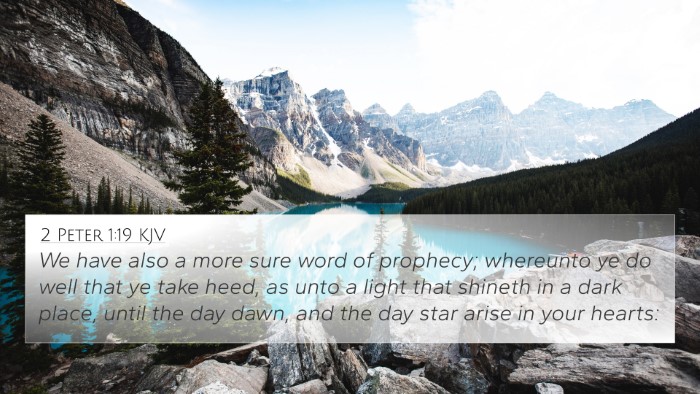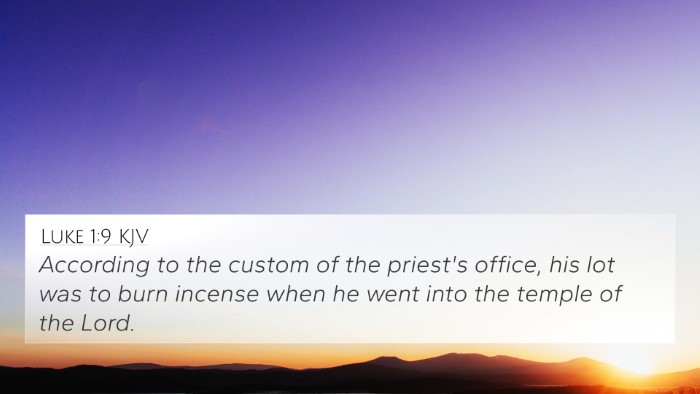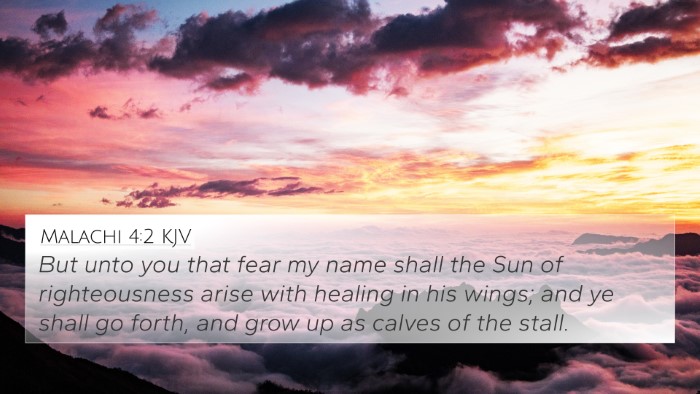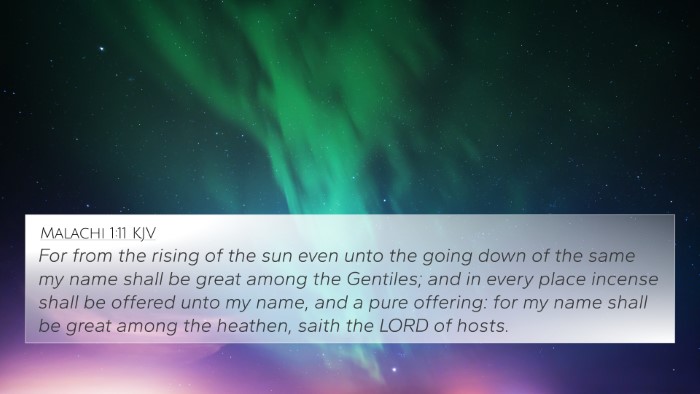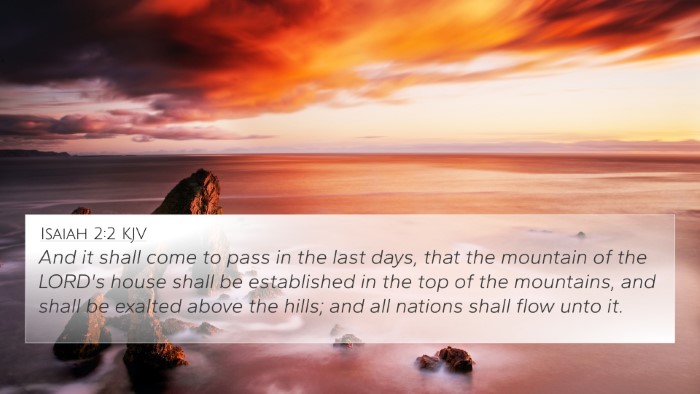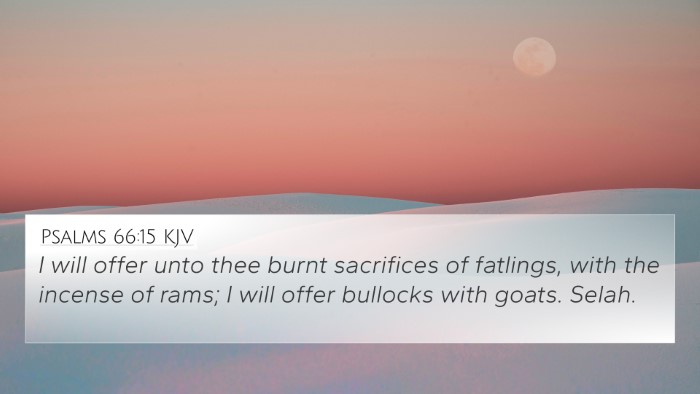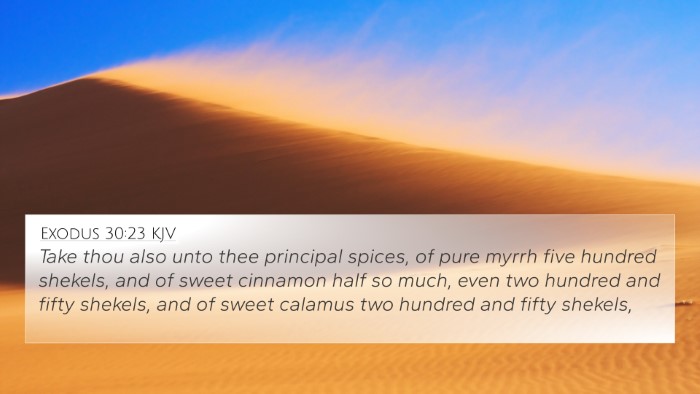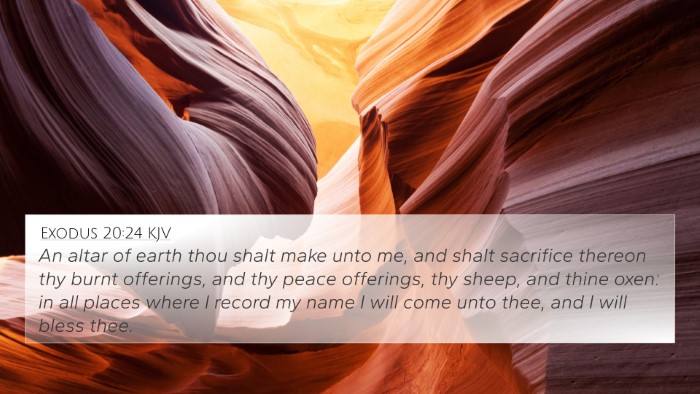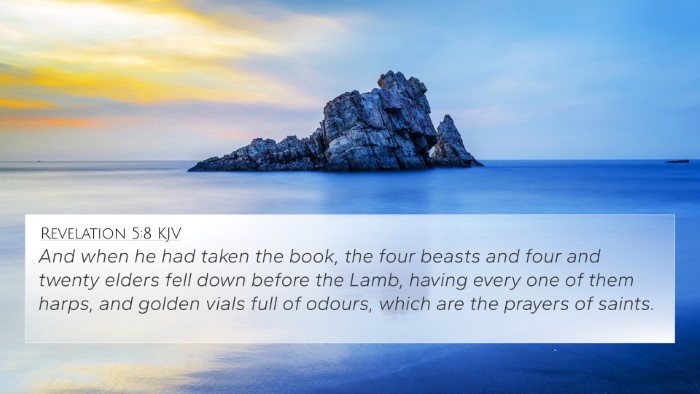Understanding Song of Solomon 4:6
Verse: "Until the day break, and the shadows flee away, I will get me to the mountain of myrrh, and to the hill of frankincense."
Introduction to the Verse
This verse is part of a poetic dialogue in the Song of Solomon, expressing deep romantic and spiritual love. The bride speaks of her longing for her beloved, using imagery connected to nature and fragrance, which serve as metaphors for love and intimacy.
Commentary Insights
Matthew Henry's Commentary:
- Symbolism of Time: Henry notes that the phrase "until the day break" symbolizes a yearning for union and fulfillment, suggesting that love will culminate in the light of day, contrasting the night’s shadows with a future of clarity and joy.
- Mountains of Myrrh: Myrrh is often used in the context of love and burial, indicating both the beauty and the cost of true love. This metaphor reflects the enduring nature of love, independent of circumstance.
- Hill of Frankincense: Frankincense is associated with worship and devotion, adding a layer of spiritual reverence to the relationship. It links the sensual to the sacred, illustrating how love transcends physical desire to touch upon the divine.
Albert Barnes' Commentary:
- Desire for Closeness: Barnes elaborates on the phrase "shadows flee away," implying a desire for closeness. The speaker intends to stay until all separation is removed, signifying a complete union with her beloved.
- Geographical Imagery: The references to mountains and hills may signify stability and strength in love. This imagery represents the high points of emotional and spiritual connection that the lovers share.
Adam Clarke's Commentary:
- Spiritual Longing: Clarke reflects on the metaphorical journey to the "mountain of myrrh," suggesting a search for deeper spiritual experiences intertwined with love.
- Contrast of Day and Night: He emphasizes the transitional nature of day and night, implying that love’s true essence is realized when one embraces both the struggles of night and the promise of day.
Cross-References and Thematic Connections
This verse correlates with several other scripture passages that explore themes of love, longing, and intimacy. The following are notable cross-references:
- Genesis 29:20: Jacob's love for Rachel highlights the joy and labor that accompany true affection.
- Proverbs 8:17: Expresses the theme of longing and seeking wisdom and love.
- Matthew 6:23: Discusses the metaphor of light and darkness, paralleling the themes in Song of Solomon.
- John 3:30: Reflects the importance of decreasing oneself to exalt another, similar to the love depicted here.
- Romans 8:38-39: Assures us that nothing can separate us from love, resonating with the intimate yearning in Song of Solomon.
- Ephesians 5:25: Depicts Christ’s love for the church, correlating spiritual love and commitment.
- 1 Corinthians 13:4-7: Defines love through various attributes, aligning with the essence of love illustrated.
Thematic Bible Verse Connections
Various themes identified in this verse echo across the scriptures, enhancing our understanding of love's nature:
- Love's Sacrifice: Reflections of love’s sacrificial nature can be seen in John 15:13.
- Intimacy and Connection: Song of Solomon 2:10-13 further illustrates the call to intimacy, mirroring the sentiments expressed in 4:6.
- Joy and Fulfillment: Fulfillment in love is thematically congruent with Psalm 16:11.
Conclusion
Song of Solomon 4:6 is rich with meaning and intertwined with various scriptural references and themes that illuminate the nature of love, longing, and spiritual connection. This verse serves as a reminder of the broader dialogue within the Bible about love's significance.
Further Study and Reflection
For those seeking a deeper understanding of these themes, utilizing tools for Bible cross-referencing, such as a Bible concordance or Bible cross-reference guide, can provide invaluable insights into how this verse resonates with others across the scriptures.
